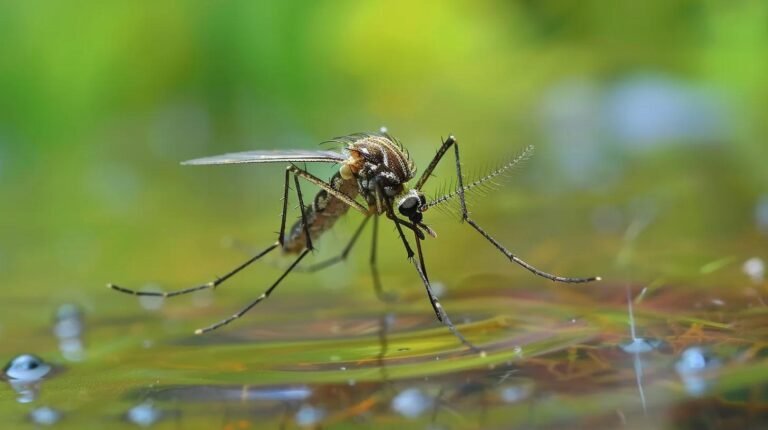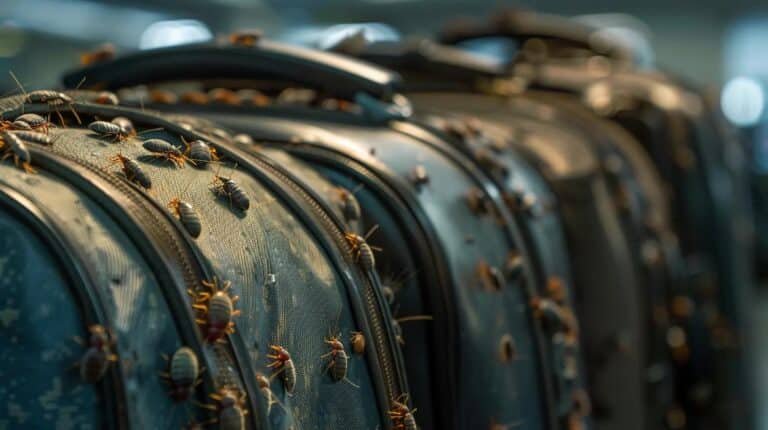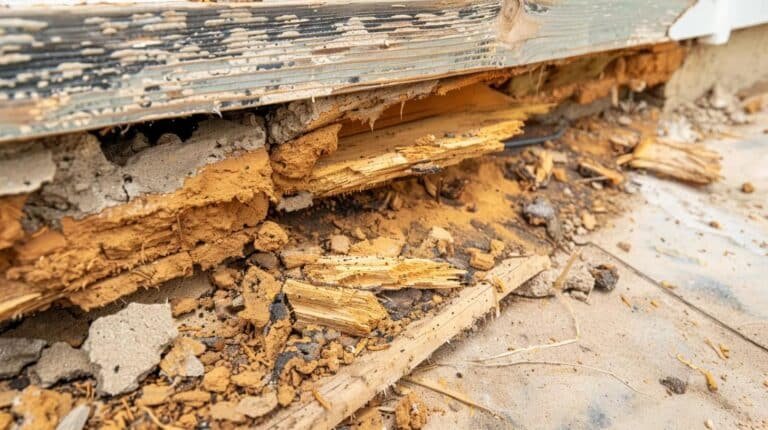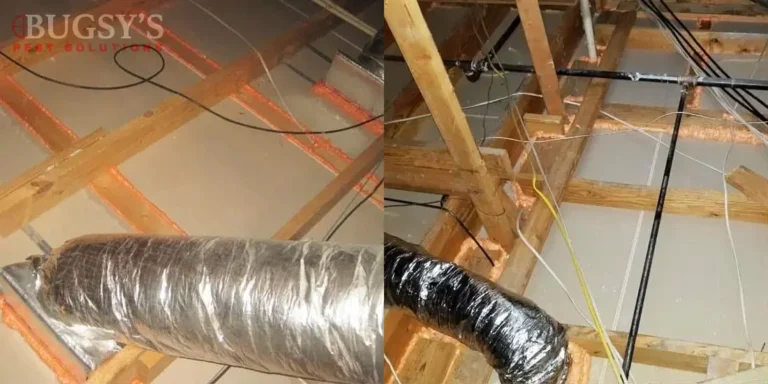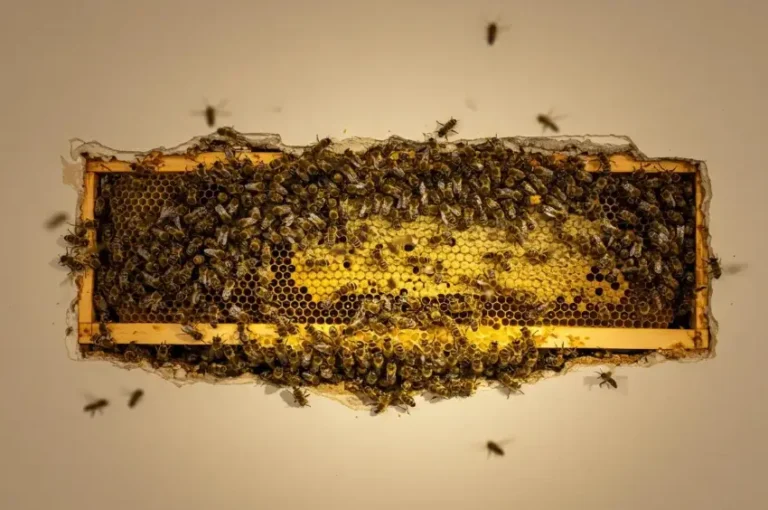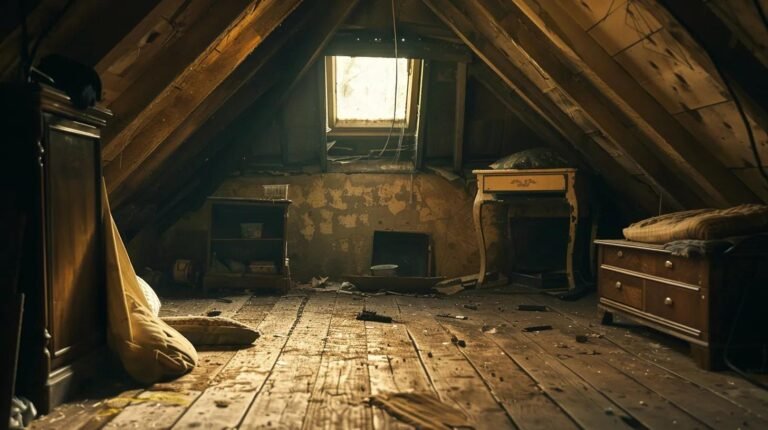Understanding Florida’s Paper Wasp Problem
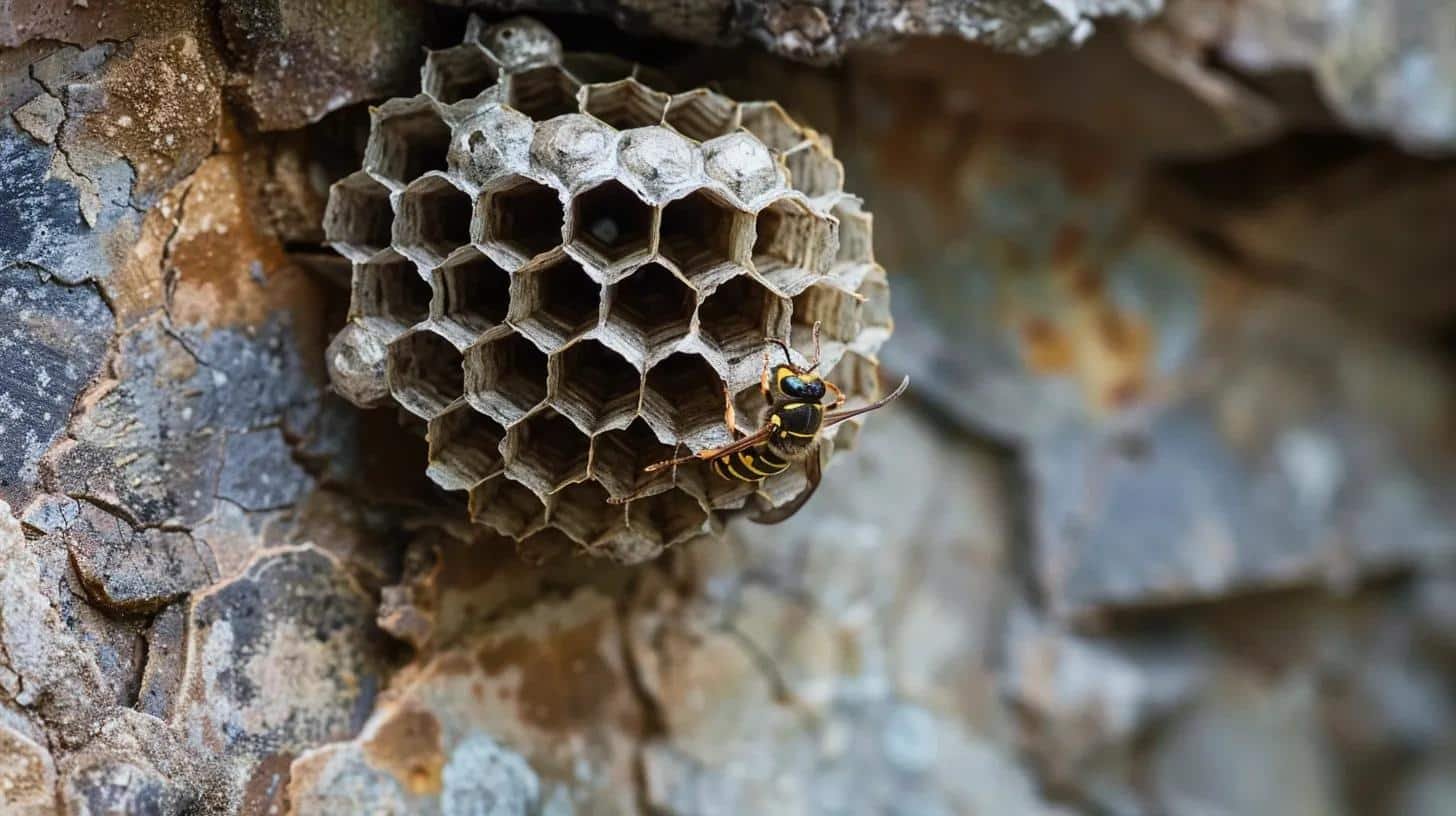
Paper wasps are among the most common stinging insects Florida homeowners encounter, especially during the warmer months. While these wasps play a beneficial role in controlling other pest populations, their nests around homes can pose serious safety risks. At Bugsy’s Pest Solutions, we’ve helped countless homeowners in Palm Beach and Broward Counties safely identify and remove paper wasp nests while implementing prevention strategies to keep them from returning.
Understanding Paper Wasps in Florida
What Are Paper Wasps?
Paper wasps are semi-social insects that build distinctive umbrella-shaped nests from a papery material they create by chewing wood fibers mixed with saliva. Florida is home to several species, with the most common being the Northern Paper Wasp and the Red Paper Wasp.
Key Characteristics:
- Size: ¾ to 1 inch long
- Color: Brown, reddish-brown, or yellow with darker markings
- Body shape: Narrow waist with long legs that dangle during flight
- Wings: Folded lengthwise when at rest
- Behavior: Less aggressive than yellow jackets but will defend their nest
Florida’s Paper Wasp Season
In South Florida’s subtropical climate, paper wasp activity differs from northern regions:
- Peak season: March through October
- Year-round presence: Mild winters allow some colonies to survive
- Multiple generations: Overlapping broods throughout the warm season
- Nest expansion: Colonies can grow significantly larger than in cooler climates
Identifying Paper Wasp Nests
Nest Appearance and Structure
Paper wasp nests are unmistakable once you know what to look for:
Physical Characteristics:
- Shape: Umbrella or inverted cone shape
- Material: Gray, tan, or brown papery substance
- Size: Ranges from golf ball to dinner plate size
- Cells: Visible hexagonal cells on the underside
- Attachment: Single central stalk connects to surface
Construction Details:
- Open-bottomed design with exposed cells
- No outer covering (unlike yellow jacket nests)
- Typically 6-8 inches in diameter when mature
- May house 15-200 wasps depending on the season
Common Nesting Locations
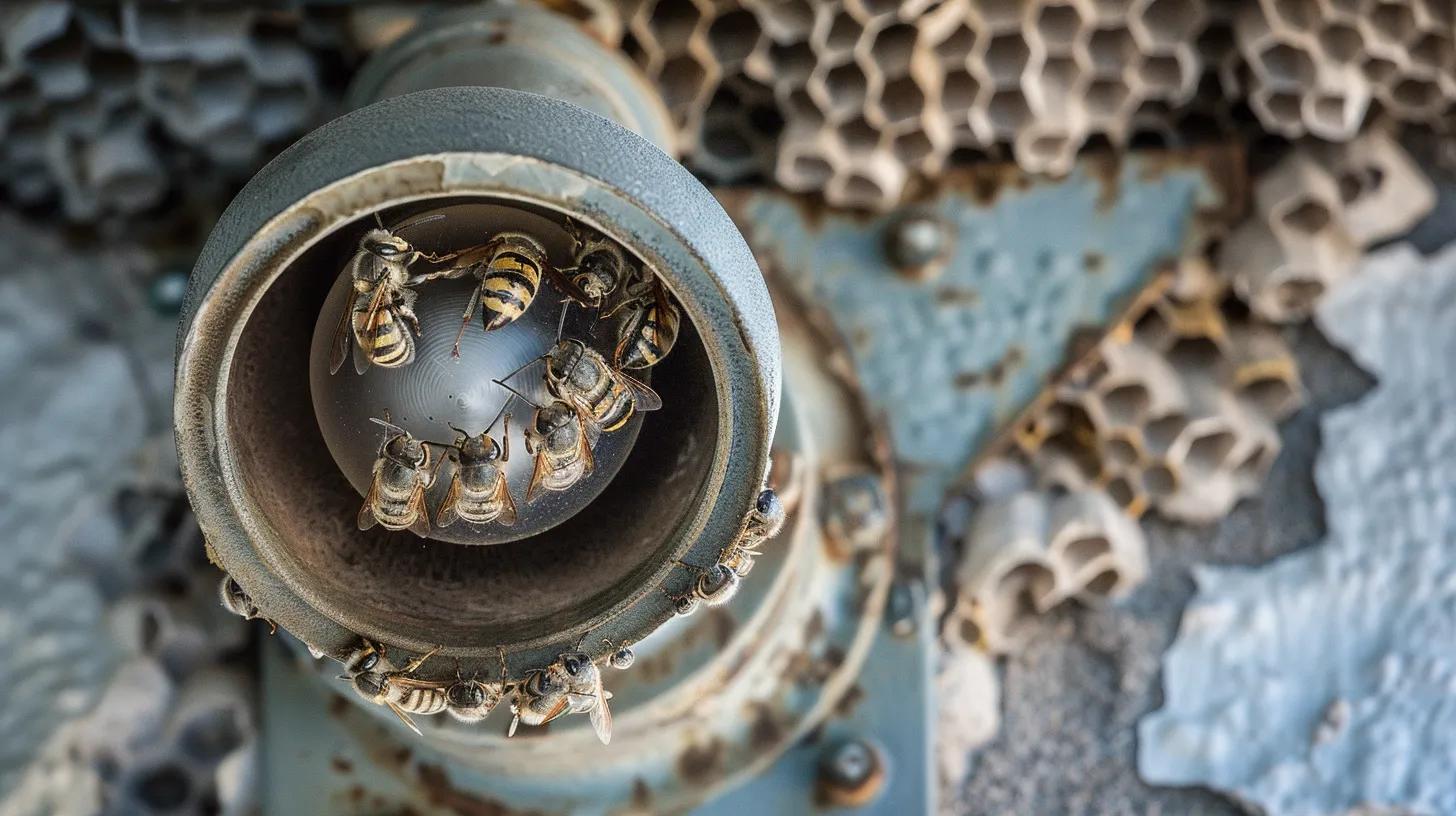
Paper wasps prefer protected areas that offer shelter from rain and wind:
Exterior Locations:
- Under eaves and roof overhangs
- Behind shutters and siding
- In outdoor light fixtures
- Under deck railings and patio furniture
- Inside outdoor grills and equipment
- Around pool areas and gazebos
Interior Locations:
- Attics and crawl spaces
- Sheds and outbuildings
- Garages (especially in corners)
- Inside wall voids near windows
Seasonal Identification Timeline
Early Spring (March-April):
- Small, new nests with single founding queen
- Nest size: 1-2 inches diameter
- Population: 1-5 wasps
Late Spring/Early Summer (May-July):
- Rapidly expanding colonies
- Nest size: 4-6 inches diameter
- Population: 15-50 wasps
Peak Summer (August-September):
- Mature colonies at maximum size
- Nest size: 6-8+ inches diameter
- Population: 50-200 wasps
Fall (October-November):
- Colony decline as temperatures drop
- New queens prepare for winter
- Old nests abandoned
Safety Considerations and Risk Assessment
When Paper Wasps Become Dangerous
While paper wasps are generally less aggressive than other stinging insects, they can become dangerous when:
- Nests are located in high-traffic areas
- Accidental disturbance occurs during yard work
- Nests are near entrances or windows
- Multiple nests are present on the property
- Children or pets have access to nest areas
Risk Factors to Consider
High-Risk Situations:
- Nests below 10 feet in height
- Multiple people with stinger allergies in household
- Nests near pools, patios, or outdoor entertainment areas
- Property maintenance activities planned near nest sites
Medical Considerations:
- Paper wasp stings are more painful than bee stings
- Risk of multiple stings when defending nest
- Potential for severe allergic reactions
- Secondary infection risk from scratching sting sites
Professional vs. DIY Removal
When to Call Professionals
Immediate Professional Help Needed:
- Nests larger than 4 inches in diameter
- Multiple nests on the property
- Nests in difficult-to-reach locations
- Anyone with known stinger allergies present
- Previous unsuccessful removal attempts
Emergency Situations:
- Nests inside living spaces
- Aggressive wasp behavior observed
- Nests blocking essential home access points
- Large swarms of wasps present
DIY Removal Risks
Common Mistakes:
- Attempting removal during peak activity hours
- Using inadequate protective equipment
- Incomplete nest removal leading to reconstruction
- Disturbing nests without proper escape route planned
- Using inappropriate removal methods
Safety Hazards:
- Multiple stings from defensive wasps
- Falls from ladders during removal attempts
- Allergic reactions without medical support nearby
- Incomplete removal causing increased aggression
The Bugsy’s Pest Solutions Approach
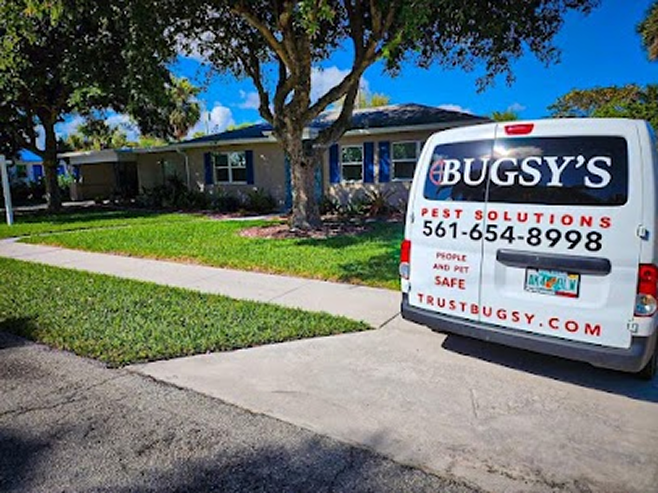
Our Professional Removal Process
Our wasp control and removal services follow a systematic approach:
- Comprehensive Property Inspection
- Identify all nest locations and wasp activity
- Assess risk levels and access challenges
- Evaluate surrounding areas for additional colonies
- Species-Specific Treatment Planning
- Determine optimal treatment timing
- Select appropriate eco-friendly treatment methods
- Plan safe access routes and equipment needs
- Safe Nest Removal
- Use professional-grade protective equipment
- Apply targeted treatments to eliminate colony
- Complete physical nest removal and disposal
- Prevention and Exclusion
- Identify and seal potential nesting sites
- Recommend landscape modifications
- Apply residual treatments to prevent re-establishment
- Follow-up Monitoring
- Inspect for new wasp activity
- Ensure complete elimination
- Address any remaining concerns
Why Professional Removal is Worth It
Safety Benefits:
- Proper protective equipment and training
- Experience handling aggressive colonies
- Medical support protocols in place
- Insurance coverage for any complications
Effectiveness Advantages:
- Complete nest elimination on first treatment
- Targeted approach reduces environmental impact
- Professional products provide longer-lasting results
- Expertise in preventing future infestations
Prevention Strategies
Landscape Management
Reduce Attractants:
- Remove fallen fruit and sugary substances
- Maintain clean outdoor dining areas
- Secure garbage cans with tight-fitting lids
- Eliminate standing water sources
Modify Nesting Sites:
- Seal cracks and gaps in exterior walls
- Install screens on vents and openings
- Remove or relocate outdoor furniture regularly
- Trim vegetation away from structures
Structural Modifications
Preventive Measures:
- Apply residual insecticides to potential nesting sites
- Install smooth surfaces where wasps typically nest
- Use wasp-deterrent plants like mint and eucalyptus
- Regular inspection and maintenance of exterior areas
Seasonal Prevention
Spring Preparation:
- Early season inspection for new nest construction
- Preventive treatments to high-risk areas
- Removal of old nest remnants
- Professional consultation for comprehensive prevention
Treatment Methods and Effectiveness
Professional Treatment Options
Targeted Spray Applications:
- Fast-acting formulations for immediate results
- Residual treatments for long-term prevention
- Eco-friendly options safe for families and pets
- Species-specific formulations for maximum effectiveness
Dust Treatments:
- Ideal for wall voids and hard-to-reach areas
- Long-lasting residual action
- Effective for multiple species
- Professional-grade equipment required
Treatment Timing
Optimal Removal Times:
- Early morning or late evening when wasps are less active
- Cooler temperatures reduce wasp mobility
- Avoid peak activity periods (midday)
- Consider weather conditions for safety
Regional Considerations for Florida Homeowners
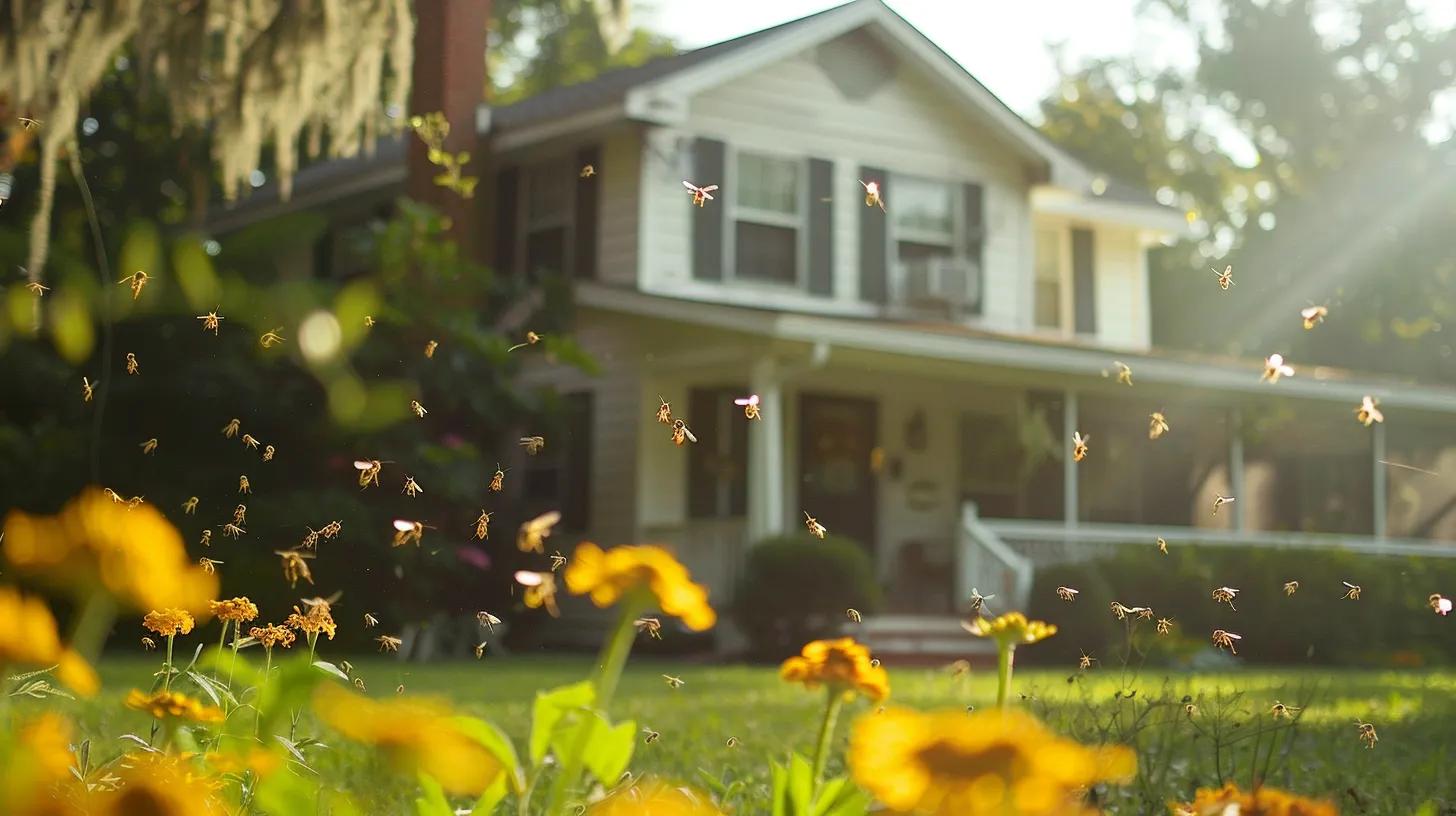
Climate Impact on Wasp Activity
South Florida Challenges:
- Extended wasp season due to warm climate
- Multiple generations per year
- Larger colony sizes possible
- Year-round nest construction potential
Seasonal Patterns:
- Peak activity during hurricane season
- Increased nesting after storm damage
- Winter survival in protected areas
- Early spring colony establishment
Common Areas of Concern
Properties in Hollywood, Plantation, and Coral Springs often experience:
- Higher wasp populations due to landscaping
- Multiple species interactions
- Increased nesting opportunities in outdoor living spaces
- Extended treatment seasons
Emergency Response Protocol
If You Discover a Nest
- Maintain Safe Distance – Stay at least 10 feet away
- Avoid Sudden Movements – Don’t swat or make loud noises
- Restrict Access – Keep children and pets away
- Document Location – Note nest size and location for professionals
- Contact Professionals – Don’t attempt removal yourself
If Stung by Paper Wasps
Immediate Care:
- Remove stinger if visible (scrape, don’t squeeze)
- Apply ice to reduce swelling
- Clean area with soap and water
- Monitor for allergic reactions
Seek Medical Attention If:
- Multiple stings received
- Signs of allergic reaction appear
- Stings are in sensitive areas (face, throat)
- Individual has known stinger allergies
Serving West Palm Beach, Broward County & Beyond
The Bottom Line: Professional Removal is the Smart Choice
While paper wasps are beneficial insects, their nests around Florida homes can pose serious safety risks. The combination of our year-round wasp season, potential for large colonies, and safety concerns makes professional removal the smart choice for most homeowners.
Don’t risk your family’s safety with DIY wasp removal. The experienced team at Bugsy’s Pest Solutions has the expertise, equipment, and eco-friendly solutions to safely eliminate paper wasp nests while preventing future infestations.
Discovered a wasp nest on your property? Contact Bugsy’s Pest Solutions immediately at (561) 654-8998 or visit trustbugsy.com for safe, professional wasp removal services. Our science-backed approach ensures effective elimination while protecting your family and the environment.
Serving Palm Beach and Broward Counties with professional wasp control solutions since 2022. When it comes to stinging insect safety, trust the experts.

